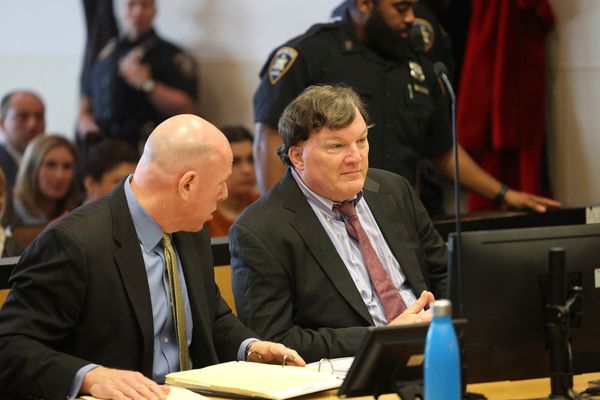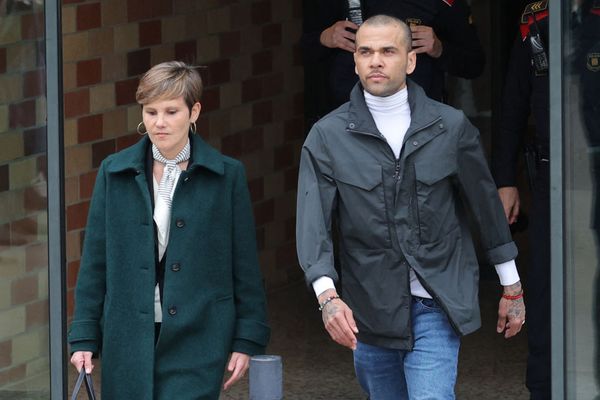
New Delhi: At 7.21 pm on a February evening, the last patient walks out of the legendary Rajkumari Amrit Kaur Out Patient Department (OPD) at the All India Institute of Medical Sciences (AIIMS), the country’s top hospital. For the next 11 hours, the premises will be an oasis of peace and quiet.
Then, at 8 am, a throng of humanity waiting outside the hospital will start descending on the block, taking over every inch of space inside, and lining up in queues that spill over onto the surrounding lanes and sidewalks, even the bus stand and Metro station, desperate for their turn to see a doctor.
This horde of mostly poor and underprivileged medical migrants to Delhi can be seen outside AIIMS daily, squatting or sleeping on the pavements in the night.
The main OPD at the institute attends to some 4,000 patients every day. When combined with the people swarming to the centre for ophthalmology, trauma centre, neurosciences centre and cardiothoracic centre, the number reaches 10,000.
Whole families accompany critical patients, clutching medical files referring them to AIIMS for consultation and treatment. They share a common narrative — no medical insurance, an exorbitant bill if they were to go anywhere else for treatment, and AIIMS was their last hope.
Among them is a six-member family from Bihar. Sanjay Prasad, a scrap dealer, is accompanied by his wife, three children and an adolescent sister-in-law.
The family from West Champaran has been making periodic visits to New Delhi for four years now to get Prasad’s seven-year-old son Aakash treated at AIIMS for thalassemia, a blood disorder.
With no money to spare, the family lives on the streets outside the AIIMS campus throughout the five-day duration of the boy’s treatment, which includes blood transfusions and related procedures.
The family’s story is emblematic of the daunting challenge India faces in fixing its healthcare apparatus. A crumbling healthcare infrastructure in rural and small-town India means that patients have to travel to the cities for treatment.
Many families are pushed into dire poverty and debt by “catastrophic health expenditure” that they have to bear by forgoing essentials, selling assets and borrowing money to pay for medical bills, according to a 2011 paper published by Soumitra Ghosh in Economic and Political Weekly.
Fundamental flaws
In an ideal situation, Prasad’s family shouldn’t have gone beyond the district hospital for a relatively simple procedure like blood transfusion for a thalassemic patient. That they chose to come all the way to New Delhi explains why AIIMS is overwhelmed and will continue to be so.
“We don’t have sufficient faculty strength for tertiary care centers in every state,” said K. Srinath Reddy, a doctor of medicine and public health expert.
“So, overload will still happen as we are not strengthening district hospitals and medical college hospitals to take care of primary and secondary care. We need to first rectify fundamental flaws in health referral system before we invest in tertiary care centers and expect them to solve all of our health challenges,” he said.
AIIMS is unique in many ways. It was Jawaharlal Nehru’s dream to foster a scientific culture in modern India. To this end, it was kept out of state or central government direct control and made autonomous.
The institute was created in 1956 by an Act of Parliament and is governed by the All India Institute of Medical Sciences Act, to be a centre of excellence.
Today, the institute may have the best doctors in the country, but the rest of the vision —“to serve as a nucleus for nurturing excellence in healthcare”—has not materialized, said Amit Sengupta, a co-convenor of Jan Swasthya Movement, a public health advocacy group.
“One of the major reasons why AIIMS has not fulfilled its mandate of research and teaching is that too much of its time and resources are spent on activities that a super-specialty centre should not do. Currently, it functions as a glorified OPD,” added Sengupta.
Families like Prasad’s look at AIIMS as a last resort—when local doctors give up and the family has no options left or when the primary healthcare centers have proved inadequate.
“There is a feeling among patients that the farther they come from, the harder they have tried to get their patient the best quality of medical care. People flock to AIIMS, Delhi, mostly for this reason—to show that they are leaving no stone unturned,” said Kavita Narayan, public health expert with the Public Health Foundation of India (PHFI).
Navigating the system
AIIMS was set up as a referral centre—where patients who could not be treated at primary or secondary level can be referred for so-called super speciality care.
“Unfortunately, this does not happen. Every patient walks in with illnesses that should be treated at primary and secondary level of care. To a very large extent, AIIMS’s ability to perform is compromised because they end up serving as an OPD,” Sengupta said.
In Prasad’s case, the silver lining is that he knows how to navigate the “system”, having dealt with it for the past four years. Even so, the journey for medical attention always begins the same way. Post hospital hours, the struggle for survival takes over.
The most frequently asked non-medical question inside the AIIMS complex is, “Where can I find a place to stay?”
The guards (the default enquiry counters) give out the information in a practised monotone—which comes from repeating the same thing over and over again to patients day after day: “There are three dharamshalas outside the campus. Take your OPD number and they should assign you a bed. If not, go to a night shelter. It is free.”
The shelters were developed by AIIMS to ensure the thousands of out-of-towners have a roof to sleep under, but can’t meet the overwhelming demand.
“My job is to take care of patients. I ensure that we do not turn away people who land here as a last resort. Overwhelmed by the patient load, we decided to open dharamshalas and night shelters around the campus. The situation is desperate for most families, but we are doctors. We cannot practise medicine, (and manage) building, lodging, provide food and free blankets,” said D.K. Sharma, medical superintendent at AIIMS.
Prasad already knows his options are limited. The raain basera, or night shelter, nearby, a large metal crater with just 50 bunk beds, is fully occupied. The night shelters are free during winter, but charge Rs. 6 a day during the rest of the year, starting 15 March, according to Raju, the night shelter’s caretaker.
The next option is any one of the three dharamshalas that offer free lodging for attendants of patients. Unlike the basera, these are concrete buildings that can accommodate “thousands”, said the caretaker, implying that every available inch of floor space is utilized to house people.
Here, Prasad is promised a bed. However, he needs to get documents from doctors to prove he has a patient admitted at AIIMS and then wait for another two days before he can get a place inside—a formality that must be complied with.
The process is tedious and he has little hope. For now, the family is spending the night at the nearby Metro station.
Parallel economy
The AIIMS campus is a collection of old buildings, spread across 100 acres, overwhelmed by patients and caregivers. They occupy the pavement running along the hospital complex, keeping out of the security staff’s way.
Snippets of conversations float around—details of treatments and diseases are exchanged between families, political insights and suggestion on where to find printers and photocopy shops.
Within a 5km radius of AIIMS flourishes a parallel economy, which the medical juggernaut has spawned. It takes care of the needs that the institution has given rise to, but cannot deal with by itself—essential, non-medical necessities of food, shelter, and medical-related services like tests and procedures, documentation, travel and phone calls.
In the bustling, narrow bylanes of nearby Yusuf Sarai market, the better-off find their mecca. Hotel rooms can be rented for a few hundred rupees per day, a meal for two can be had for around Rs.80. A cheaper option is renting cooking apparatus for Rs.15 a day.
Catering to this demand is Vikas Garg, a trader who rents utensils on a daily basis. The seemingly successful business model has been around for nearly three decades.
“My father decided to rent utensils and gas stoves. We collect a security amount and have a daily charge,” said Garg, whose shop Garg Bartan Bhandar is a focal point of this informal economy. Here, a pressure cooker can be rented for Rs.3; a spoon for Rs.1 and scraps of paper pass off as receipts of transactions.
Even this is out of reach for Prasad’s family. They can neither rent a room nor the cooking accessories. Not surprising in a country where nearly 40 million people are pushed into poverty every year because of healthcare expenses, according to a 2009 study, India’s Deepening Health Insecurity, published by Economic and Political Weekly.
Meanwhile, Aakash has just received his blood transfusion. As the evening sets in, the family is quickly finishing dinner outside the OPD. In the morning, all six people will return to the same spot inside the hospital—Aakash’s siblings are too young to be left behind.
Prasad’s sister-in-law had to be brought along to Delhi because she couldn’t live alone back home in the village. And so, a single patient has five attendants.
This is not an aberration—every patient coming to AIIMS is accompanied by at least three attendants, either out of solidarity or because there is no other alternative. The need for shelter and food expands proportionately.
“Unlike other countries where at most a patient has two attendants, people turn up at AIIMS with their entire families. The facility is not built for that purpose,” said PHFI’s Narayan.
Unless there is a behavioural change, AIIMS will be reduced to a glorified OPD, overwhelmed by patients and attendants, according to her.
Cultural—and sometimes even religious—reasons play a role in the medical decision-making of Indian patients, said Sengupta of Jan Swasthya Movement.
AIIMS clones
“Indians do not take medical decisions rationally. People take their own decision as to where they must go to seek treatment. Public perception is that if they go all the way to Delhi, they will get better medical attention. Across India, there is a general mistrust towards public hospitals, but not AIIMS. Only, AIIMS was never built to treat every walk-in patient,” Sengupta said.
In 2012, the All India Institute of Medical Sciences (Amendment) Bill, was introduced in the Lok Sabha allowing the first six “AIIMS-like” institutions—in Bhopal, Bhubaneswar, Jodhpur, Patna, Raipur and Rishikesh—to be set up, reducing the burden on the Delhi hospital.
The purpose of the amendment was to ensure that the “AIIMS-like” institutions are autonomous. Since then, seven more “AIIMS-like” institutions have been approved and now, the government is working towards establishing an AIIMS in every state.
Experts are unsure about their chances of success.
“The question of setting up an AIIMS in every single state is a bit unrealistic from the point of view of expecting the said institutes to have same excellent standards and attract same good quality of faculty,” said Reddy.
“Delhi hospitals do well because private practice is not allowed. In virtually every other state, private practice is allowed for government doctors. Many government doctors, therefore, are associated with three-four corporate hospitals and not fully dedicated to the government side,” he added.
Reddy has a suggestion: the creation of an All India Health Cadre, much on the model of the Indian Administrative Service, to staff these institutions.
There is a long way to go for a change in the mindset of the patients who throng AIIMS. Prasad, for instance, will keep coming to Delhi for his son’s treatment because he “now understands the system and can operate here”. It would be difficult to learn his way around a new hospital and its many complexities.
The next morning, Prasad’s family, along with thousands of others, were waiting in a queue once again, going through the drill of medical tests, procedures—and survival.







